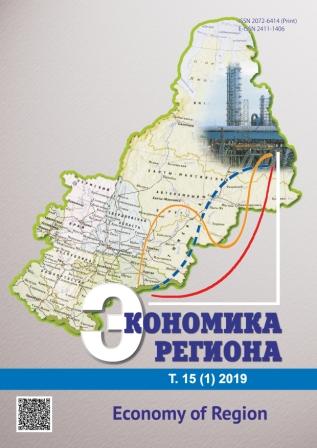Стратегия экономического роста на основе динамики валового внутреннего продукта
Economic Growth Strategy Based on the Dynamics of Gross Domestic Product
Author(s): Kasim Nazifovich Yusupov, Yuliya Semenovna Toktamysheva, Rustem Rinatovich Akhunov, Azat Vazirovich YangirovSubject(s): Economy, National Economy, Socio-Economic Research
Published by: Институт экономики Уральского отделения Российской академии наук
Keywords: gross domestic product;gross regional product;product doubling;region;economic growth;extensive gain factors;intensive gain factors;intermediate products;end products;interregional analysis;
Summary/Abstract: The issue of economic growth has become urgent since the country’s leadership set the task of doubling general domestic product (GDP) for the period from 2001 to 2010. We calculated the required annual growth rate and analyzed it both by year and over the past few years. The results suggest that GDP has not doubled within 10 years. Thus, it is appropriate to consider separately the pace of Russian economy on the whole and the total gross regional product (GRP) of its constituent regions. We analyzed its contradictions and disproportions restraining dynamic economic development at different levels. As a hypothesis, we assumed that the problems of the country’s economic growth mostly stem from such contradictions in the regional development. The research base was information on the volumes and dynamics of the Russian Federation GDP and GRP of its regions from 2001 to 2016, which indicate economic growth. We have assessed whether GDP and GRP dynamics was conform to the strategic guidelines of Russia’s economic development. We processed the dataset using a number of methods such as grouping, average and relative values, analysis of time series. Firstly, this processing has revealed, that the objective of doubling Russia’s GDP has not been met even over 16years (only 3.57 % was reached instead of the required average annual rates of 4.42 %). Secondly, over 16 years, the leading regions have been steadily developing whereas outsiders have become weaker, and the factors of regional development have remained unchanged. Thirdly, the analysis of the Republic of Bashkortostan case demonstrates that the existing model of regional economic growth, as well as the impact of the base effect, has reached its limits. Thus, growth rates are slowing down alongside with increasing absolute production volumes, while the ratio of intermediate and end products persists in the long term. Consequently, the regional economy lacks systemic positive structural changes, without which breakthrough economic growth is impossible. The obtained results can be used for improving the analysis and forecasting techniques of Russian regional development and forming an effective regional policy.
Journal: Экономика региона
- Issue Year: 15/2019
- Issue No: 1
- Page Range: 151-163
- Page Count: 13
- Language: Russian

